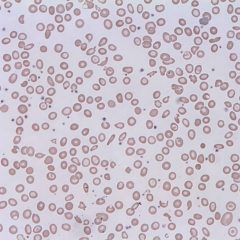In-Flight Emergency: Altered Mental Status Secondary to Hypoglycemia
ABSTRACT:
Audience:
This simulation is appropriate for all emergency medicine learners from medical students to senior residents.
Introduction:
It has been reported that 1 in every 10,000 to 40,000 passengers on board of a commercial airline will have a medical emergency while in- flight.1 That is roughly 1 out of every 600 flights.2 Many healthcare providers are unaware of the available medical equipment, effects of cabin pressure, and resulting opportunities for medical intervention. But physicians on board may be asked to render medical care for passengers experiencing medical emergencies in-flight. It is important for healthcare providers to be familiar with the most common in-flight medical emergencies and how to best address them.
One common emergency that occurs during air travel is hypoglycemia in insulin dependent diabetic patients.3 It has been noted that changes in air and cabin pressures affect the amount of insulin secreted from insulin pumps. One article explains that as the airplane ascends, ambient pressure decreases and air comes out of solution, forming bubbles.3 These bubbles displace insulin in a pump, causing excess delivery.3 Excess insulin delivered during ascent in an airplane may cause hypoglycemia 1-2 hours later while in flight.1,3 The United States Food and Drug Administration states that it addresses such malfunction during the manufacturing of insulin pumps.3,4 However, there have still been reported malfunctions, which occur 40-50 times worldwide per year while in-flight.3
Objectives:
By the end of this simulation session, learners will be able to:1) Discuss the challenges associated with in-flight emergencies. 2) List what is available in United States (US) commercial airline medical kits. 3)Discuss an appropriate differential diagnosis for a patient with altered mental status (AMS). 4) Demonstrate appropriate treatment of hypoglycemia. 5) Describe possible complications in diabetic patients with insulin pumps when flying. 6) Review the legal ramifications of responding to an in-flight emergency.
Method:
This case can use a high, medium or low-fidelity simulation mannequin or a standardized patient; alternatively, this case can also be used as an oral boards case.
Topics:
Simulation, diabetes, hypoglycemia, altered mental status, seizure, endocrinology.

